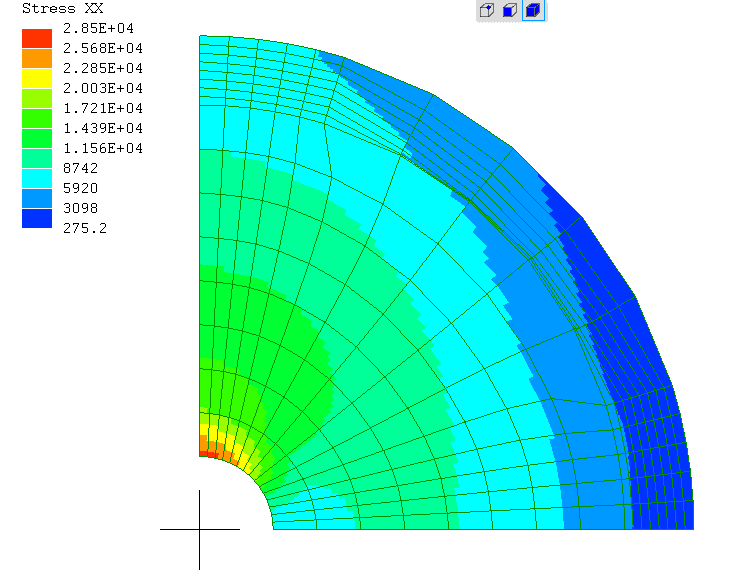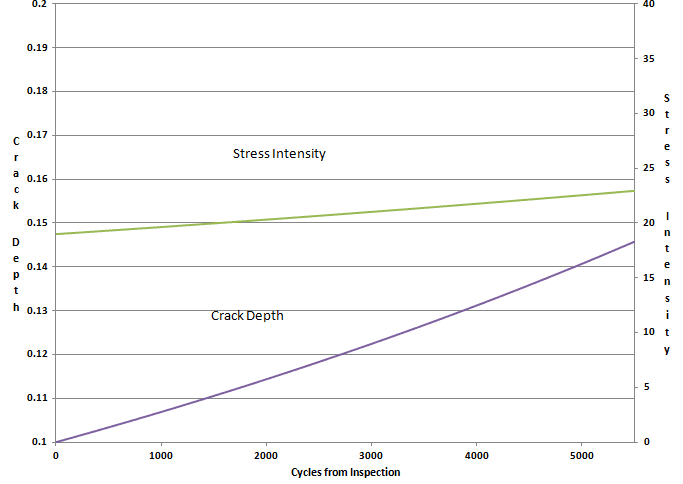Engineering Evaluation
Engineering Evaluation of Rotor Bores
Engineering evaluation or life assessment of rotor bores is typically performed post boresonics inspection. 3angles offers this service as an option for clients who would like to determine the remaining life or the next inspection interval of their steam turbine and generator rotors.
Methodology
The stable growth rate of a crack in a component can be estimated knowing the depth of the crack, the nominal stress surrounding the crack and the fracture toughness of the component material. As the crack grows to a critical depth, the growth becomes unstable, and the component is considered to have failed.
A typical fracture mechanics evaluation consists of finding the stress intensity factor for a given crack depth and comparing that value to the material crack resistance known as the fracture toughness. This is like comparing the stress applied to a component to the yield strength of the component material.
Finite Element Analysis
FEA (Finite Element Analysis) is a numerical procedure for analyzing structures that are too complicated to be solved by classical analytical methods. A basic finite element concept is discretization. The turbine is discretized by modeling it as a series of finite elements connected at each corner by nodes. The stresses which drive a crack in the turbine tube will be calculated by building an axisymmetric model of the undamaged turbine.
Once the stress, material properties and the crack depth are known, a fracture mechanics evaluation can be performed. This consists of calculating the growth of the crack with time due to start-stop cycles and to creep during the steady state operation of the turbine. The stress intensity factor is then compared to the fracture toughness of the material. This will also be done for the hydrostatic test case.
Approach
A finite element analysis model will be built of the rotors using the non-destructive testing data, material properties, dimensions, and operational data. Then the loads, thermal and mechanical, due to a cold start will be applied to the model and the stresses calculated. Using these stresses, known locations of flaws and the material properties of the rotor, a recommendation of the rotor boresonics re-inspection interval will be made.
This recommendation is based on the calculated crack growth rate. A graph of the projected fatigue crack growth will be generated using the methodology discussed above. The time for the crack to reach the critical crack depth is calculated. The recommended inspection interval is determined by applying a safety factor to this time.


